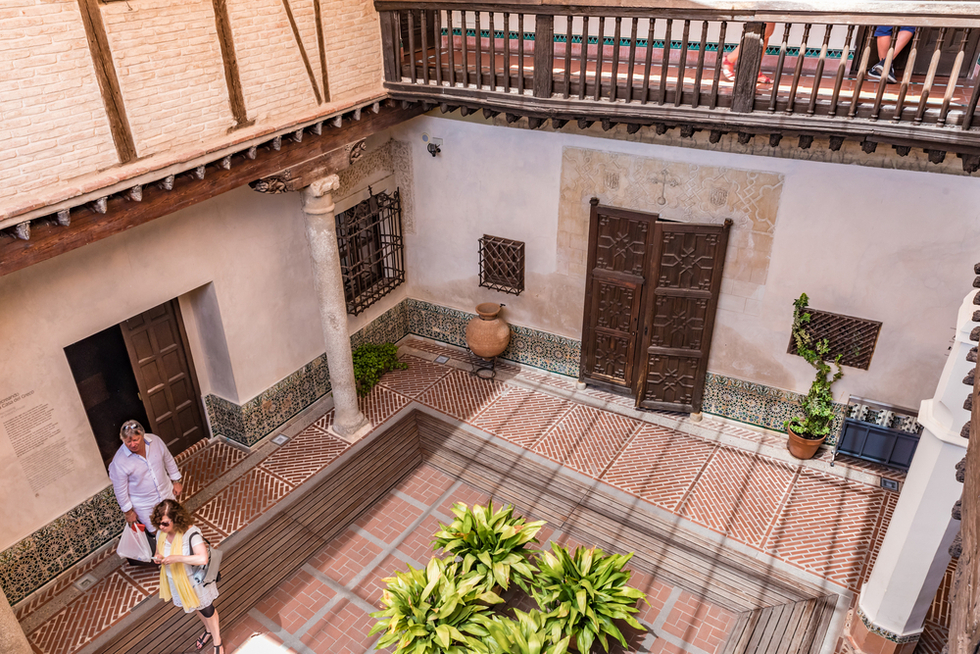In the early 20th century the Marquis de Vega-Inclán, a wealthy patron of the arts, bought this old house in the Jewish quarter under the misapprehension that it had once belonged to El Greco. The museum he founded, to promote the painter’s work and show how life was led in his era, started a trend for a type of art-cum-folk museum you’ll see all over Spain: bogus but effective nonetheless. The museum got an extensive makeover ahead of the 400th anniversary of El Greco’s death in 2014 and is a delight, with period gardens, Mudéjar cave rooms, and a good collection of El Greco’s later works. Among the most notable pieces are a full set of portraits of the apostles (irresistible postcards of which are available in the shop), the retablo of San Bernardino, and the celebrated View and Plan of Toledo. It’s fascinating how the development of the museum, as well as the works it contains, has become part of Toledo’s story.
Toledo
Travel Guide
Toledo› Attraction
Museo del Greco
Paseo del Tránsito, s/n
 Takashi Images / Shutterstock
Takashi Images / Shutterstock
Our Rating
 Hours
Tues–Sat 9:30am–7:30pm (until 6pm in winter); Sun 10am–3pm
Phone
92-522-36-65
Prices
Admission 3€ adults; 1.50€ students; free for seniors and children 17 and under; free for all Sun and Sat after 4pm
Web site
Museo del Greco
Hours
Tues–Sat 9:30am–7:30pm (until 6pm in winter); Sun 10am–3pm
Phone
92-522-36-65
Prices
Admission 3€ adults; 1.50€ students; free for seniors and children 17 and under; free for all Sun and Sat after 4pm
Web site
Museo del Greco
Map
Paseo del Tránsito, s/n ToledoNote: This information was accurate when it was published, but can change without notice. Please be sure to confirm all rates and details directly with the companies in question before planning your trip.





 About our rating system
About our rating system


